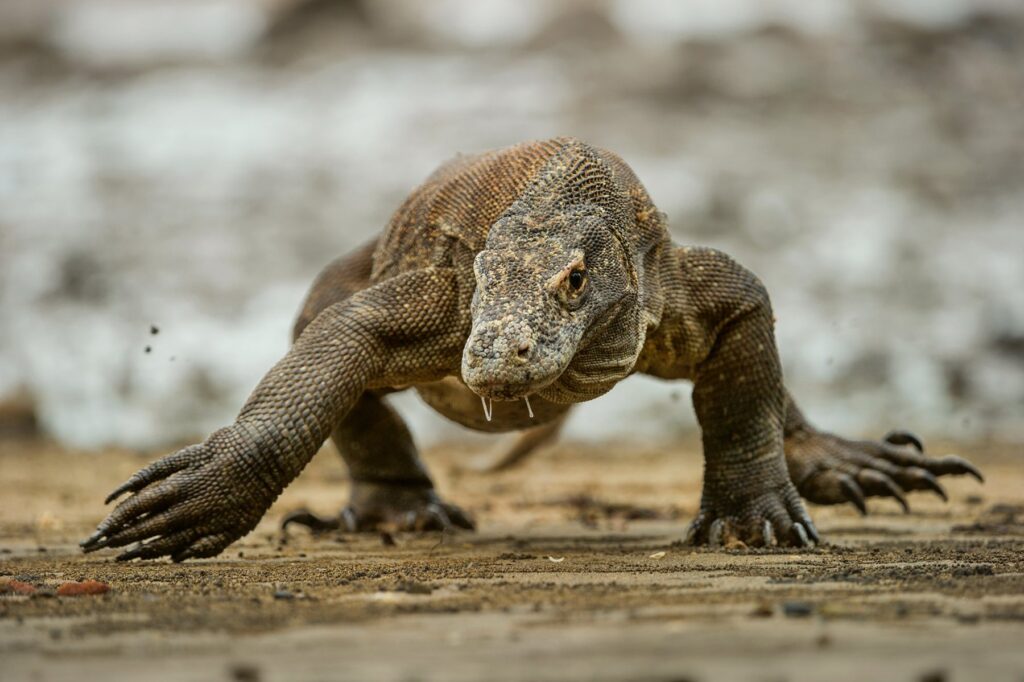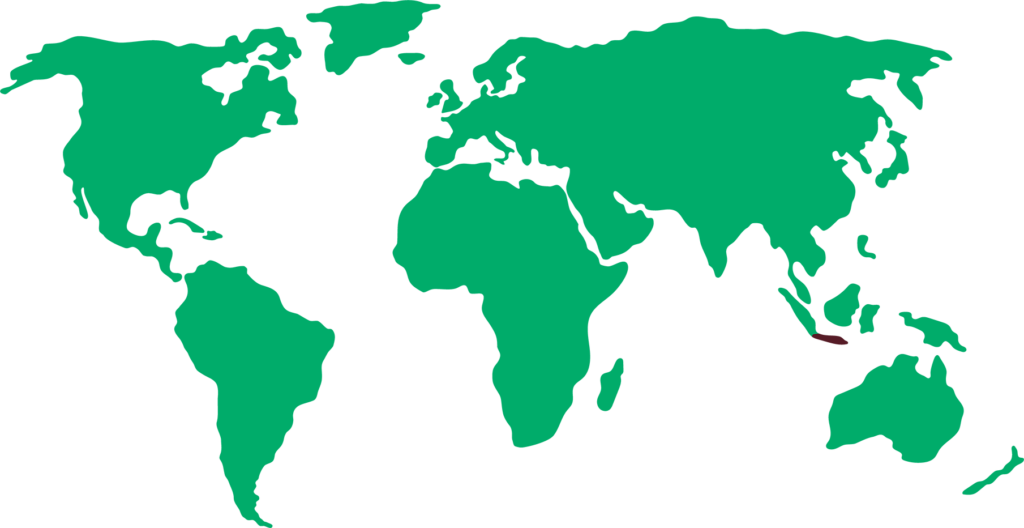KOMODO DRAGON
Varanus komodoensis

Length

3 m
weight

120 kg
LIFESPAN

25 years
The Komodo dragons are the largest lizard in the world. They reaches up to 3 metres long and weighs between 60 and 120kg. They are top predators on the islands they inhabit and are at the top of the food chain.
General characteristics
They have wide jaws, sharp claws and 60 serrated teeth that are replaced often and can be up to 2.3cm long. Their tongue is long, yellow and forked.
Their skin is covered with scales. The coloration of the youngest ones are green with yellow and black tones and when they grow to adulthood, it becomes brown mixed with greyish red. The tail is long and muscular and is used as a weapon or as a support when raising itself from the ground. They also use their tails for swimming, as they are very good swimmers.
Their saliva is often stained with blood because their teeth are almost covered by gum tissue that is naturally damaged during chewing. Because of this, the saliva is highly charged with bacteria and contains venom which is secreted from glands situated in the lower jaw. Once bitten, the prey dies within two days from muscular paralysis and septicemia.
Feeding
They are carnivores that feed mainly on carrion. As adults, they can eat larger animals such as deer, buffalo, goats, etc.
They can also be cannibalistic, which is why the newborns spend the first year of their lives on the trees to avoid being eaten by the adults.
Behaviour
They are diurnal animals. They avoid moving around at night and during the hottest hours of the day. Komodo dragons are very territorial. Males can defend a territory of two square kilometres.
These animals don´t have a highly developed sense of hearing, but they do have a very keen sense of smell located on their forked tongue. They can detect prey from 10km away.
Reproduction
Komodo dragons usually mate between May and August.
The female lays about 20 eggs in burrows covered with leaves, and she takes care of them and incubates them until they hatch. This process usually takes between 7-9 months. Occasionally, they can also reproduce by parthenogenesis, where a male is not needed for fertilisation.
Threats
Komodo dragon is an endangered species. In the wild there are around 5,000 individuals and their habitat is being threatened by volcanic and seismic activity in the area, a shortage of prey due to poaching and increased tourism.
Distribution
In the savannah of the smaller Sunda Islands (Indonesia): Komodo, Rinca, Padar, Gili Motang and Flores.

Did you know?
When young Komodo dragons approach a carcass in search of food, they roll in faeces to deter hungry adults.
In 2004, Europe’s first captive hatchling was born in “Reptilandia” (Gran Canaria).
Komodo dragons are more closely related to snakes than to lizards.
Conservation status
